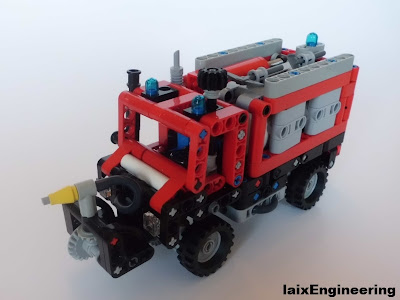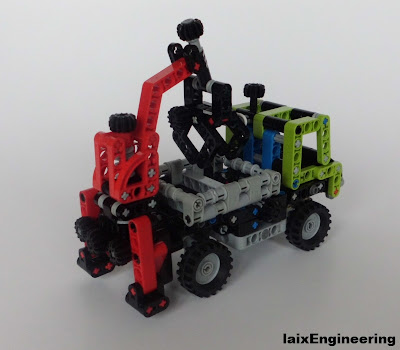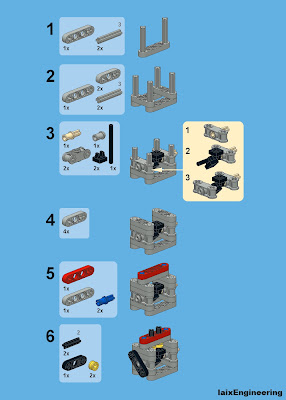While being busy at work and university I spent less time building with LEGO®. I tried to work on some projects like a dumper truck and a street sweeper, but both of them need some more time because of problems in development and lack of time figuring those. So I came up with a THW-Version of my Mini Unimog Fire Brigade.
"THW (Technisches Hilfswerk) is the Federal Agency
for Technical Relief of the Federal Republic of Germany.
Its statutory tasks include the provision of
technical assistance at home and humanitarian aid
abroad."
Source: http://www.thw-nw.deIts main features are as follows:
- 9V power supply with "generator" and light towers
- Trailer with lifting mechanism
- Boat with raiseable propeller and hatch
And this is what I came out with.
I used a Hinge with Towball Socket (30396) and a Steering Knuckle Arm (6572) to attach the trailer to the Unimog. Therefore, the Hinge is placed inbetween two Axle and Pin Connectors Perpendicular (6536). At the back is the 9V power take off using a Plate 2 x 4 with Contacts (4757) connected to an Electric 9V Battery Box Small (4760c01) via an old Electric Wire (5306b).
The trailer can be lifted to launch the boat, while the winch can pull it out of the water. Both functions use a combination of a Gear 8 Tooth (3647) and an Axle Pin with Friction Ridges (42093).
The boat is also a simple build with hatch at the front to rescue people drowning, a searchlight and a raisable propeller.
One of the various helpful tasks of the THW is to illuminate the deployment location. So it has two light towers using the PF LEDs (61930c01) and a generator to "hide" the wire connectors of the PF LEDs and the PF Extension Wire (60656).
This is my first presentation without real photos due to the lack of some parts (and money) and I would like to get some feedback, if this is an equivalent alternative to photos of the build model.
Note:
LEGO®
Digital Designer lacks in some parts, you have to replace the fake parts of these:
- Electric 9V Battery Box Small (4760c01)- Electric Wire (5306b)
- Electric Plate 2 x 4 with Contacts (4757)
- PF LEDs (61930c01)
- PF Extension Wire (60656)
With best regards,
Jan




































